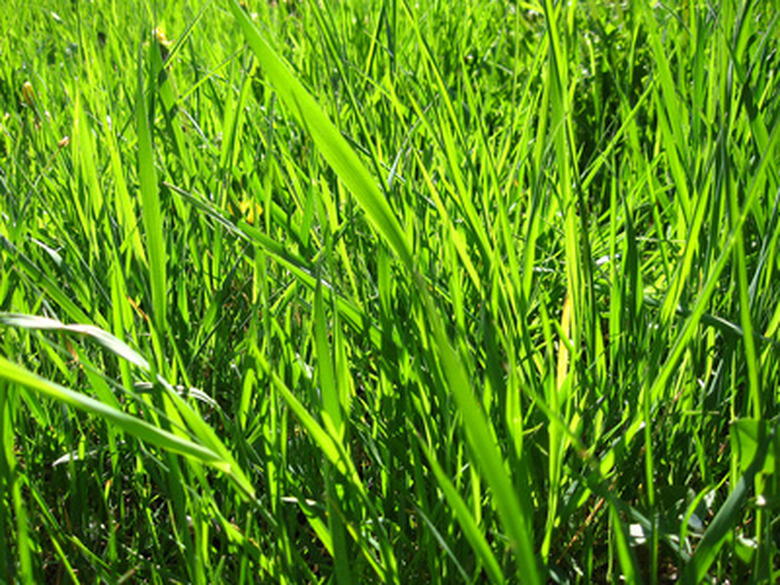Grass That Stays Green During The Winter
We may receive a commission on purchases made from links.
Colorful green lawns are not uncommon in the middle of spring or summer across the United States. Beautiful green grass is a lot less common during the winter months, though. But there are some grass types that are able to withstand heat and cold extremes, including in the transitional zones, and produce that coveted green color during winter: bermudagrass, zoysia and Kentucky bluegrass. If you sow grass seed and follow a good maintenance program, you could enjoy a green lawn all year long.
Try Growing Bermudagrass
Try Growing Bermudagrass
In the United States, bermudagrass (Cynodon spp., USDA zones 7-10) can grow as far north as the transitional zone. However, this perennial green grass favors high temperatures, even in the winter. So bermudagrass is limited in growth success by winter temperatures in the transitional zone that exceed 10 degrees Fahrenheit.
Bermudagrass will maintain its green color in the winter in some areas across the South and lower portions of the transitional zone as long as an average temperature of 50 degrees Fahrenheit is maintained. But that rule can be broken. If winter temperatures fall below 30 degrees Fahrenheit at night and are offset by daytime temps as high as 70 degrees, bermudagrass can still thrive and be green during the winter.
To promote a healthy green lawn of bermudagrass, make sure it receives full sun and drains well so water doesn't pool on it. Regular fertilization and mowing during the growing season sets the stage for a colorful green lawn throughout winter.
Zoysia Can Thrive
Zoysia Can Thrive
Zoysiagrass (Zoysia spp., zones 6-11) can stay green during the winter months too. In fact, in the transitional zone — where cold season grasses fare better in one part of the state and warm season grasses in another — zoysiagrass will survive in both. in fact, this particular winter green grass is hardier in colder temps than bermudagrass.
Damage in the winter to zoysiagrass is less likely, too, than bermudagrass. But in order for zoysia to be more than a pale green color in the winter months, plenty of fertilizer must be applied during the growing season to keep it healthy and again in the fall to help it prepare for winter dormancy. You won't need to apply fertilizer during winter.
For a healthy winter lawn, water at the start of dormancy so the zoysia stays hydrated, but don't water throughout winter as it could lead to disease.
Kentucky Bluegrass Does Well
Kentucky Bluegrass Does Well
Another grass that stays green during the winter is Kentucky bluegrass (Poa pratensis, zones 3-7). This grass is blue-green in color, cold hardy enough for the Pacific Northwest and tolerant of both heat and shade. Kentucky bluegrass is the most widely planted of the cool-season grasses too.
This grass requires frequent watering and plenty of fertilizer, though, in order to maintain its winter blue-green color. The best time for Kentucky bluegrass maintenance is in early fall, so the grass has time to prepare for the colder months. It is tolerant of heat and shade and is disease resistant. Under low maintenance conditions, Kentucky bluegrass will still produce an attractive lawn with winter color.
References
- University of Arkansas Division of Agriculture: Cooperative Extension Service: Choosing a Grass for Arkansas Lawns
- Sod Solutions: Zoysia Homeowner Maintenance Guide
- Clemson Cooperative Extension: Zoysiagrass
- Clemson Cooperative Extension: Bermudagrass Yearly Maintenance Program
- NC State Extension: Kentucky Bluegrass
